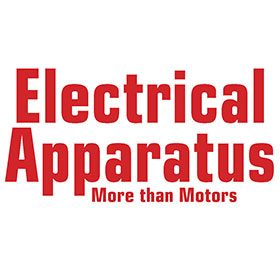From skyscraper-sized wind turbines to pacemakers no bigger than a pen lid, humanity needs efficient, compact electrical coils in a range of sizes and designs — and lots of them.
Chris Lee, Portfolio Director for coil winding trade show CWIEME Berlin, explores three ways automation helps the industry meet demand.
Traditionally, as in virtually all manufacturing, coils were wound manually. Using skilled workers to manufacture coils enables a range of winding topologies, but the process is prone to inconsistencies and labour bottlenecks. These drawbacks often make manual winding incompatible with modern requirements.
Today, new industries like electric mobility, renewable energy and telecommunications all require high-performance coils. Demand in these industries has rocketed, and companies now need massive quantities of top-quality coils.
Automation has begun to close this gap, offering speed, consistency and design flexibility while also reducing costs. Here’s a closer look at how automation is shaping the coil winding industry.
Production volumes
EV sales drastically increased between 2020 and 2025. According to the International Energy Agency (IEA) In 2023, one in five (18 per cent of) vehicles sold were electric or hybrid, bringing the estimated global fleet size in 2024 to around 40 million vehicles.
With up to four motors in each EV, the accelerating adoption of e-mobility presents a significant challenge to the supply chain. Without automation, coil winding for motor production could stall the rollout of EVs.
Similarly, during the transition to renewable energy, demand for resources used in coil winding, like copper, will grow. For example, the global wind turbine fleet is expected to need over five million tonnes of copper, according to Wood Mackenzie. Here, efficiency gains in coil winding will be crucial. More efficient coils allow manufacturers to build better generators with improved energy conversion rates.
Precision manufacturing
Automation can also help deploy new types of winding technology. For example, one type of winding now common in EV applications is hairpin winding. Hairpin winding allows for a higher slot fill factor, meaning more copper can be packed into the stator, reducing resistance and improving heat dissipation.
Unlike traditional coil winding, which relies on continuous wire winding, hairpin technology requires precise shaping, bending and insertion to manufacture a coil — tasks more suited to robotic automation than manual intervention. Automation would ensure exact dimensions, reducing variations and improving electrical performance.
Defect detection
Employing AI and machine learning at the quality control stage can also improve manufacturing processes. For instance, automated machine vision systems could identify winding errors in coils faster and more accurately than a human.
Computer vision systems are especially useful when manufacturing micro coils for medical technology or aerospace. Miniature coils can be less than 0.5mm in diameter and often use wire so fine it is practically invisible to the naked eye.
When deployed throughout the manufacturing process chain, such automated inspection systems could help manufacturers identify production deviations much sooner, reducing waste and ensuring the quality of finished products.
Furthermore, real-time analytics combined with automated adjustments to winding speed and wire placement could improve consistency and address defects before they became significant.
By providing higher precision and repeatability, faster production times and better material efficiency, automation is transforming electrical manufacturing in a range of sectors. For companies looking for ways to scale without compromising on quality, CWIEME Berlin offers a chance to connect with industry experts exploring the future of coil winding and a range of other themes. You can discover the latest automation technologies at the CWIEME Innovation Zone.
Secure your free ticket
Image courtesy of ZHWindingMachine




















